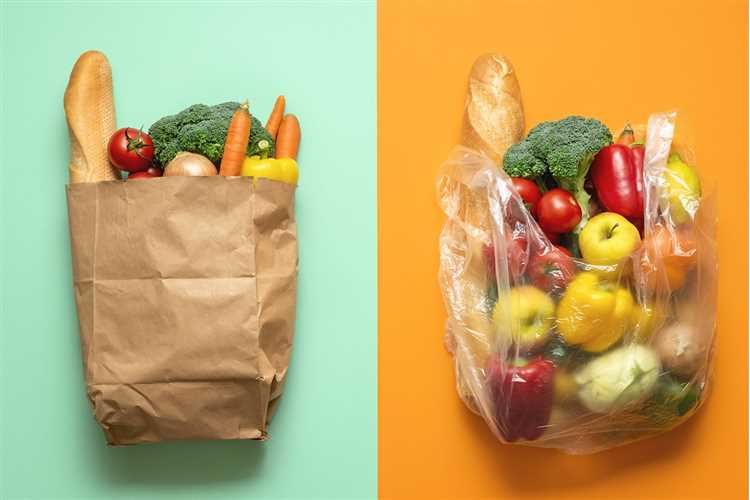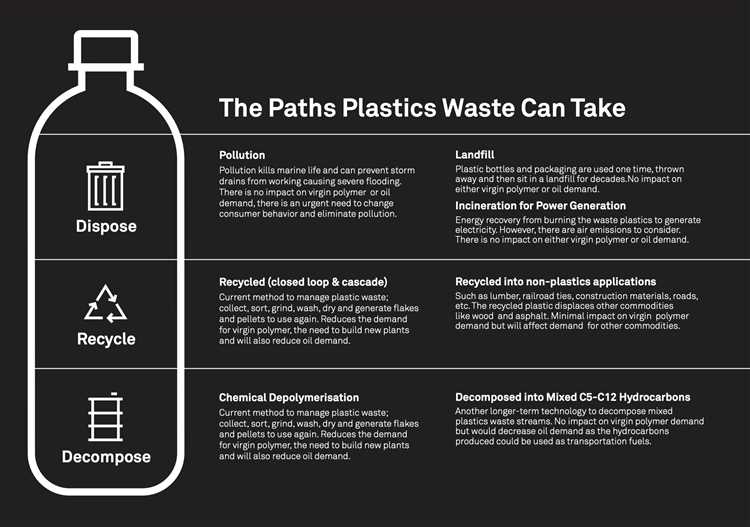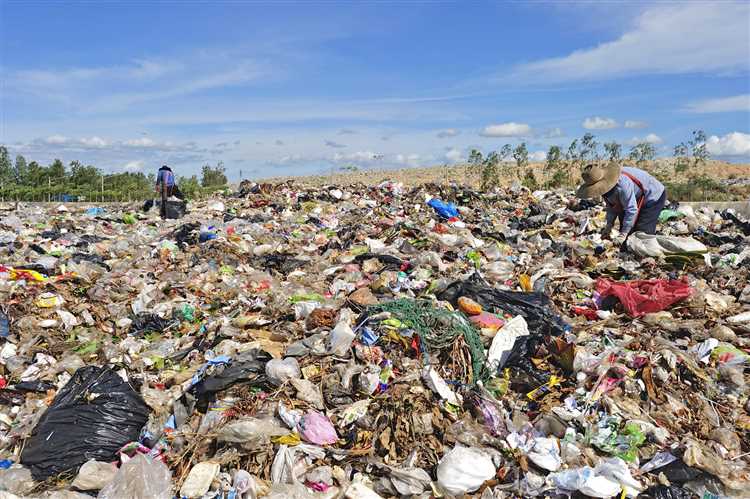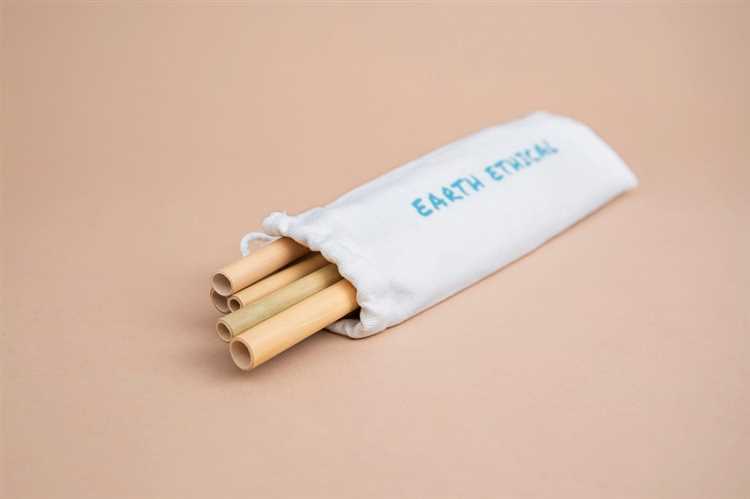In recent years, there has been a growing concern over the environmental impact of plastic. This versatile material has become an integral part of our daily lives, but its durability and resistance to degradation have made it a major contributor to pollution.
Thankfully, researchers and innovators around the world are now actively searching for alternatives to plastic. With a focus on sustainability and reduced environmental impact, these alternatives aim to provide viable options for various industries.
One promising alternative is bioplastics. Made from renewable sources such as corn starch or sugarcane, bioplastics offer similar functionalities to traditional plastics but with the added benefit of being biodegradable. This means that they can break down naturally over time, reducing their impact on ecosystems.
Another exciting option is the exploration of natural materials. From bamboo to seaweed, researchers are finding innovative ways to transform these abundant resources into durable and eco-friendly alternatives to plastic. These materials are not only renewable but also often require fewer resources during production.
Furthermore, the rise of technological advancements has led to the development of new materials such as mycelium-based packaging. Utilizing the root structure of mushrooms, this biofabrication technique creates lightweight and compostable packaging options that can replace traditional plastic foam packaging.
As the world becomes increasingly aware of the need for sustainable solutions, the search for alternatives to plastic continues. By exploring and investing in these innovative materials, we can pave the way for a future with reduced plastic waste and a healthier planet for future generations.
- Biodegradable Materials: The Future of Packaging
- The Benefits of Biodegradable Packaging
- The Challenges Ahead
- Sustainable Solutions: Eco-Friendly Alternatives
- Innovative Technologies: Revolutionizing the Plastic Industry
- FAQ:
- Why is it important to explore alternatives to plastic?
- What are some potential alternatives to plastic?
- Are there any challenges in replacing plastic with alternatives?
- What role can consumers play in promoting alternatives to plastic?
Biodegradable Materials: The Future of Packaging

As concerns about plastic waste and its impact on the environment continue to grow, the search for biodegradable alternatives has become a top priority for many industries. Biodegradable materials have the potential to revolutionize packaging and offer a sustainable solution to the global plastic problem.
One promising biodegradable material is bioplastics, which are derived from renewable resources such as cornstarch, sugarcane, or algae. These materials can be molded into various shapes and sizes, making them a versatile option for packaging. Bioplastics are not only biodegradable, but they also have a lower carbon footprint compared to traditional plastics, as they require less energy to produce.
The Benefits of Biodegradable Packaging

Biodegradable packaging offers several benefits that make it an attractive alternative to traditional plastics. First and foremost, biodegradable materials break down naturally over time, reducing the amount of waste that ends up in landfills or polluting our oceans.
Additionally, biodegradable packaging can help reduce the carbon emissions associated with the production and disposal of traditional plastics. By using renewable resources to create packaging materials, we can decrease our reliance on fossil fuels and contribute to a more sustainable future.
The Challenges Ahead

While biodegradable materials show great promise, there are still some challenges that need to be overcome before they can fully replace traditional plastics. One challenge is the cost of biodegradable materials, which can be higher than their non-biodegradable counterparts. However, as technology advances and production scales up, the cost is expected to decrease.
Another challenge is the infrastructure needed to properly dispose of biodegradable packaging. Currently, many recycling facilities and waste management systems are not equipped to handle these materials. Developing the necessary infrastructure will be crucial to ensure the widespread adoption of biodegradable packaging.
Despite these challenges, the potential of biodegradable materials to revolutionize the packaging industry and reduce plastic waste is immense. As consumers and businesses continue to prioritize sustainability, the demand for biodegradable packaging will only continue to grow.
In conclusion, biodegradable materials offer a sustainable solution to the plastic problem. With their ability to break down naturally, reduce carbon emissions, and potential for widespread adoption, they are truly the future of packaging. The challenges ahead can be overcome with investment in research, development, and infrastructure, paving the way for a more environmentally friendly packaging industry.
Sustainable Solutions: Eco-Friendly Alternatives

In our quest to find alternatives to plastic, sustainability and eco-friendliness are two crucial factors to consider. Fortunately, there are several materials and products that offer sustainable and environmentally-friendly solutions. Here are a few options:
Biodegradable Materials:
One option is to replace plastic with biodegradable materials, which are capable of breaking down naturally without causing harm to the environment. Biodegradable materials such as plant-based plastics, bamboo, paper, and even mushroom-based products, offer a sustainable alternative to conventional plastics. These materials can be used for packaging, utensils, bags, and other single-use items.
Reusable Alternatives:
Another approach is to encourage the use of reusable alternatives to single-use plastic items. For instance, replacing plastic bags with reusable cloth bags or replacing plastic water bottles with reusable stainless steel or glass bottles can significantly reduce plastic consumption. Additionally, using reusable containers for food storage or replacing plastic straws with metal or bamboo alternatives are simple yet effective ways to minimize plastic waste.
Compostable Packaging:
Compostable packaging is another promising option that allows for the efficient breakdown of materials without generating harmful pollutants. These types of packaging materials are made from biodegradable substances and can be composted alongside organic waste. By using compostable materials such as compostable bags, food containers, and coffee cups, we can reduce the impact of plastic waste on the environment.
Natural Fibers:
Natural fibers, such as cotton, jute, hemp, and linen, offer another sustainable alternative to plastic. These materials are renewable and biodegradable, making them an excellent option for clothing, bags, and other textile-based products. Choosing products made from natural fibers not only reduces reliance on plastic but also supports the growth of eco-friendly industries.
Consumer Awareness and Behavior:
Ultimately, the most sustainable solution to replace plastic lies in consumer awareness and behavior. By educating ourselves and others about the environmental impact of plastic, we can make informed choices and actively seek out eco-friendly alternatives. Choosing sustainable products, supporting businesses with eco-friendly practices, and reducing our overall plastic consumption are essential steps to creating a more sustainable future.
In conclusion, there are several eco-friendly alternatives to plastic that offer sustainable solutions. By utilizing biodegradable materials, promoting reusable alternatives, investing in compostable packaging, and considering products made from natural fibers, we can make a positive impact on the environment. However, the long-term solution lies in changing consumer behavior and embracing a sustainable mindset. Together, we can pave the way for a plastic-free future.
Innovative Technologies: Revolutionizing the Plastic Industry

As the world continues to grapple with the environmental impact of plastic waste, innovative technologies are emerging to revolutionize the plastic industry. These technologies offer sustainable alternatives to traditional plastic production and waste management methods. By reducing our reliance on single-use plastics and developing eco-friendly materials, these advancements hold the potential to create a more sustainable future.
One such technology is biodegradable plastics, which are made from renewable sources such as plants or biomass. These plastics can break down naturally through microbial processes, reducing their environmental footprint compared to traditional plastics. Additionally, bioplastics can be designed to be compostable, further minimizing waste and contributing to a circular economy.
Another revolutionary technology is 3D printing, which has the potential to transform the way plastic products are manufactured. By using additive manufacturing techniques, 3D printers can create complex shapes and structures with minimal waste. This not only reduces the amount of plastic required for production but also allows for customization and on-demand manufacturing, leading to resource efficiency and reduced transportation emissions.
New advancements are also being made in the field of plastic recycling. Traditional mechanical recycling methods often lead to a degradation of plastic quality, limiting the range of applications for recycled plastics. However, innovative technologies, such as chemical recycling and pyrolysis, are enabling a more efficient conversion of plastic waste back into raw materials. This not only reduces the demand for virgin plastics but also contributes to a circular economy by closing the loop of plastic waste.
Furthermore, researchers and scientists are exploring the potential of using nanotechnology in the plastic industry. Nanomaterials, such as graphene and carbon nanotubes, possess unique properties that can enhance the strength, durability, and conductivity of plastic products. These advancements can lead to the development of stronger, lighter, and more energy-efficient plastic materials, reducing the overall environmental impact.
Overall, the combination of these innovative technologies has the potential to revolutionize the plastic industry and create a more sustainable future. By reducing the reliance on single-use plastics, developing biodegradable alternatives, improving recycling methods, and exploring nanotechnology, we can make significant strides in minimizing plastic waste and mitigating its impact on the environment.
FAQ:
Why is it important to explore alternatives to plastic?
It is important to explore alternatives to plastic because plastic pollution has become a major global problem. Plastic takes hundreds of years to decompose and is causing significant harm to the environment and wildlife. By finding alternatives to plastic, we can reduce our reliance on this harmful material and mitigate its negative effects.
What are some potential alternatives to plastic?
There are many potential alternatives to plastic. Some examples include biodegradable plastics made from plant-based sources, such as corn or sugarcane, which can decompose more easily and have less impact on the environment. Other alternatives include reusable materials like glass or metal, as well as natural fibers like bamboo or hemp.
Are there any challenges in replacing plastic with alternatives?
Yes, there are several challenges in replacing plastic with alternatives. One challenge is the cost. Many plastic alternatives can be more expensive to produce, which can make them less accessible for some consumers. Additionally, there may be technical limitations in terms of the properties of the alternatives, such as their durability or resistance to certain conditions. However, with continued research and development, these challenges can hopefully be overcome.
What role can consumers play in promoting alternatives to plastic?
Consumers can play a significant role in promoting alternatives to plastic. By choosing to purchase products made from alternative materials and avoiding single-use plastic items, consumers can create demand for more sustainable options. Additionally, spreading awareness about the environmental impact of plastic and educating others about alternatives can also help drive change. By making conscious choices, consumers can contribute to a more sustainable future.